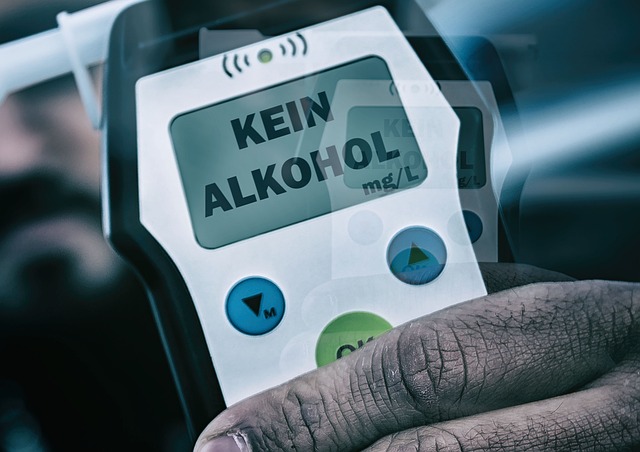Breath Alcohol Testing (BAL) plays a critical role in determining culpability and property damage liability in DUI cases, offering an objective measure of blood alcohol content (BAC). Accurate BAL results are crucial for fair legal outcomes, mitigating wrongful convictions or penalties. However, achieving reliable test results faces challenges like human error, environmental factors, and individual metabolic differences. To ensure integrity, strict adherence to best practices, including equipment calibration, quality control, consistent environments, and standard operating procedures by trained personnel is essential for Property Damage Liability in DUIs.
“In the realm of DUI (Driving Under the Influence) cases, Breath Alcohol Level (BAL) testing is a critical component. This article delves into the intricacies of BAL testing, highlighting its pivotal role in shaping legal outcomes and exploring the impact on Property Damage Liability claims. We examine challenges that hinder accurate results and offer best practices to ensure valid, admissible evidence. Understanding these factors is essential for professionals navigating DUI litigation, especially when property damage is involved.”
- Understanding BAL Testing and Its Role in DUI Cases
- The Impact of Accurate Results on Property Damage Liability
- Challenges in Achieving Reliable BAL Test Outcomes
- Best Practices for Ensuring Valid and Admissible Evidence
Understanding BAL Testing and Its Role in DUI Cases

BAL testing, or Breath Alcohol Testing, plays a pivotal role in DUI (Driving Under the Influence) cases by providing an objective measure of an individual’s blood alcohol content (BAC). This process is crucial for ensuring justice and accurate culpability determination in such legal matters. When a driver is suspected of operating a vehicle while intoxicated, law enforcement officers can use BAL testing to gather critical evidence. Accurate results from these tests are essential, as they directly impact the outcome of the case, especially regarding Property Damage Liability in DUIs.
The reliability of BAL testing is paramount as it helps establish or refute claims of intoxication and the subsequent legal consequences. In DUI cases, accurate BAC readings can exonerate innocent individuals or strengthen the prosecution’s case against those responsible for causing property damage or personal injury while under the influence. Thus, understanding and implementing rigorous standards in BAL testing procedures are vital to upholding the integrity of the criminal justice system.
The Impact of Accurate Results on Property Damage Liability

Accurate BAL (Breath Alcohol Level) testing results are paramount in mitigating Property Damage Liability, especially in cases involving DUIs (Driving Under the Influence). When a driver is accused of DUI, precise breath test outcomes can significantly influence the legal proceedings that follow. Inaccurate readings could lead to unfair convictions, as they may not reflect the individual’s true alcohol intake at the time of driving. This is particularly crucial when considering potential property damage claims and civil lawsuits that often arise from DUI incidents.
The reliability of BAL testing ensures that culpability is established based on factual evidence, reducing the chance of wrongful accusations or penalties. In scenarios where vehicles are involved in accidents, accurate test results can help determine liability for property damage by providing a clear picture of the driver’s alcohol impairment level at the time of the incident. This data aids in fair compensation and legal resolution for all parties affected by DUI-related crashes.
Challenges in Achieving Reliable BAL Test Outcomes

Achieving reliable results from Balance (BAL) tests is often fraught with challenges, especially in legal contexts such as DUI cases where Property Damage Liability is a key issue. One significant hurdle is the potential for human error during the testing process. Even slight variations in test conditions, like temperature or humidity, can introduce inconsistencies and skew outcomes. Furthermore, the sensitivity of BAL equipment requires meticulous calibration and regular maintenance to ensure accuracy. Failure to adhere to standardized protocols can lead to false readings, impacting the admissibility of evidence in court.
Another challenge lies in the dynamic nature of alcohol metabolism, which varies between individuals based on factors like body weight, gender, and metabolism rate. These variables can cause fluctuations in breath alcohol concentration (BAC), making it difficult to obtain consistent and reliable BAL test results. In DUI cases, where precise BAC levels are crucial for determining liability, these challenges underscore the importance of rigorously controlled testing procedures and the latest, most accurate equipment to ensure justice is served.
Best Practices for Ensuring Valid and Admissible Evidence

Maintaining the integrity of evidence is paramount, especially in legal scenarios like DUI cases with accompanying property damage liability claims. To ensure valid and admissible results from BAL (Breath Alcohol Level) testing, several best practices must be implemented. First and foremost, proper calibration and maintenance of the breathalyzer equipment are essential to guarantee accuracy. Regular quality control checks and adherence to manufacturer guidelines will prevent any potential bias or error in readings.
Additionally, a consistent and controlled testing environment is crucial. Factors such as temperature, humidity, and room layout can influence test results, so maintaining standard operating procedures ensures fairness. Proper training of personnel conducting the tests is also vital; they must be adept at operating the equipment and following protocols to collect and preserve evidence in a legally admissible manner.
Accurate Breath Alcohol (BAL) test results are paramount in DUI cases, not only for ensuring justice but also for managing property damage liability. As these tests play a pivotal role in legal proceedings, understanding the challenges and adopting best practices is essential to maintain reliability and admissibility of evidence. By adhering to strict protocols, professionals can ensure that BAL testing provides accurate data, ultimately contributing to fair outcomes in DUI-related cases and mitigating potential property damage liabilities.






